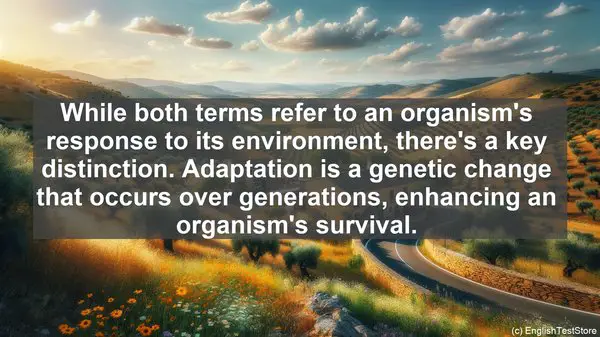Introduction
Today, we’re diving into the fascinating world of evolutionary medicine. But before we begin, it’s crucial to understand the precise meanings of certain terms. In this lesson, we’ll explore the top 10 commonly confused words in this field, ensuring you have a strong foundation for further studies. Let’s get started!
1. Adaptation vs. Acclimation
While both terms refer to an organism’s response to its environment, there’s a key distinction. Adaptation is a genetic change that occurs over generations, enhancing an organism’s survival. On the other hand, acclimation is an individual’s short-term adjustment to environmental conditions. So, adaptation is long-term and heritable, while acclimation is temporary and reversible.
2. Homologous vs. Analogous Structures
When comparing different species, it’s essential to differentiate between these terms. Homologous structures have a common evolutionary origin, even if their functions differ. For example, the forelimbs of a human, a bat, and a whale. In contrast, analogous structures serve similar functions but have different evolutionary origins, like the wings of a bird and the wings of an insect.
3. Microevolution vs. Macroevolution
Microevolution and macroevolution both involve genetic changes, but at different scales. Microevolution refers to small-scale changes within a population, such as the frequency of a particular gene. Macroevolution, on the other hand, encompasses large-scale changes, leading to the formation of new species over time. So, microevolution is within a population, while macroevolution is about the creation of new species.

4. Genetic Drift vs. Natural Selection
While both are mechanisms of evolution, they operate in different ways. Genetic drift is a random change in gene frequencies within a population, often due to chance events. In contrast, natural selection is the process by which certain traits become more or less common in a population, based on their impact on survival and reproduction. So, genetic drift is random, while natural selection is driven by fitness.
5. Convergent vs. Divergent Evolution
Convergent and divergent evolution describe patterns of species’ development. Convergent evolution occurs when different species independently evolve similar traits due to similar environmental pressures. Divergent evolution, on the other hand, is when two or more species evolve different traits from a common ancestor. So, convergent evolution leads to similarity, while divergent evolution leads to diversity.
6. Vestigial vs. Atavistic Traits
Vestigial and atavistic traits are remnants of our evolutionary history. Vestigial traits are structures or behaviors that have lost their original function over time, like the human appendix. Atavistic traits, on the other hand, are rare occurrences where ancestral traits reappear in a species after being absent for generations. So, vestigial traits are remnants, while atavistic traits are reappearances.

7. Speciation vs. Extinction
Speciation and extinction are two opposite processes in the evolutionary timeline. Speciation is the formation of new species, often due to reproductive isolation and genetic divergence. Extinction, on the other hand, is the complete disappearance of a species. So, speciation is about the creation of new species, while extinction is the end of a species.
8. Gene Flow vs. Genetic Isolation
Gene flow and genetic isolation are factors that influence genetic diversity within a population. Gene flow occurs when individuals from different populations mate, leading to the exchange of genetic material. Genetic isolation, on the other hand, happens when a population becomes reproductively separated, preventing gene flow. So, gene flow increases diversity, while genetic isolation reduces it.
9. Ontogeny vs. Phylogeny
Ontogeny and phylogeny are terms that describe different aspects of an organism’s development. Ontogeny refers to an individual’s development from fertilization to adulthood. Phylogeny, on the other hand, is the evolutionary history and relationships between different species. So, ontogeny is about an individual’s development, while phylogeny is about the broader evolutionary context.
10. Genotype vs. Phenotype
Genotype and phenotype are two fundamental concepts in genetics. Genotype refers to an organism’s genetic makeup, the specific combination of alleles it possesses. Phenotype, on the other hand, is the observable traits and characteristics resulting from the interaction of the genotype with the environment. So, genotype is the genetic code, while phenotype is the physical expression.
